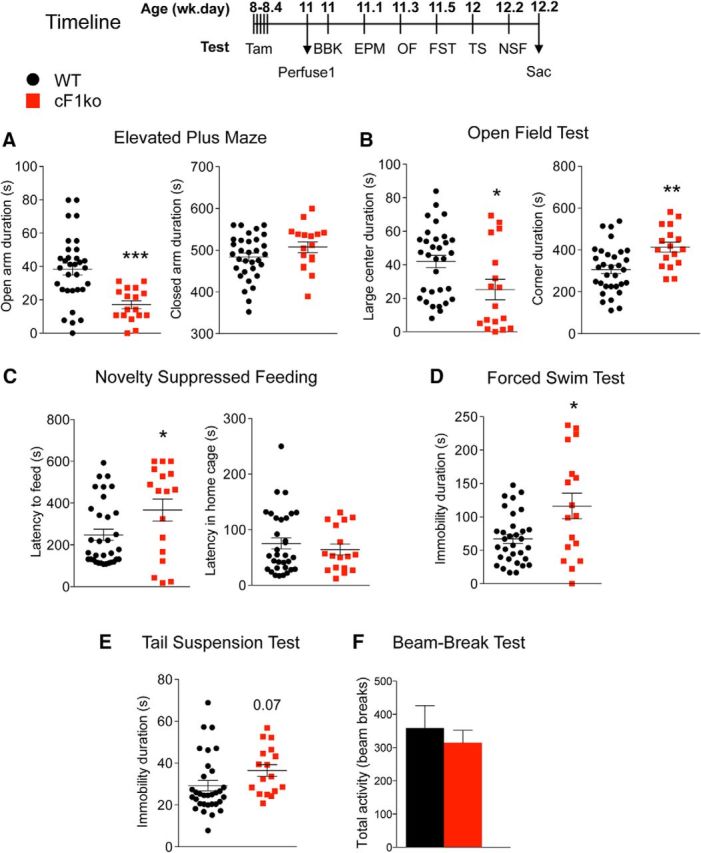Figure 3.

Increased anxiety- and depression-like behavior in cF1ko mice. The cF1ko and WT littermates underwent the indicated behavioral tests or assays according to the timeline shown, 2 weeks after the last tamoxifen injection (11 weeks of age). A–C, Increased anxiety in cF1ko mice. A, EPM test. Compared with WT, cF1ko mice spent less time in open arms (unpaired two-tailed Student's t test, df = 47, t = 4.104, **p < 0.01), with no difference detected in closed arm time. B, OF. cF1ko mice displayed significantly reduced distance traveled in large center (unpaired two-tailed Student's t test, df = 47, t = 2.486, *p = 0.0165), with no change in total distance (data not shown). C, NSF test. cF1ko mice showed greater latency to approach food in the novel arena (unpaired two-tailed Student's t test, df = 48, t = 2.221 *p = 0.0311), but no difference in the home cage. D, E, Depression-like behavior in cF1ko mice. D, FST. The cF1ko mice showed significant greater immobility duration in the FST compared with F1wt mice (unpaired two-tailed Student's t test, df = 47, t = 2.962, *p < 0.05). E, TST. No difference in immobility duration between cF1ko and WT was seen. F, Locomotion test. Results from the BBK test showed no difference in total 30 min activity comparing cF1ko and F1wt (WT) mice. Data are mean ± SEM in cF1ko mice (n = 17) versus F1wt (WT) (n = 32).
